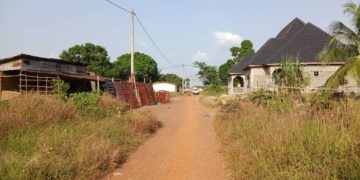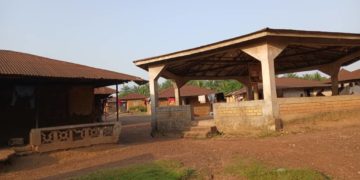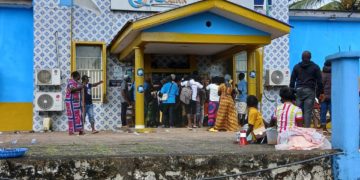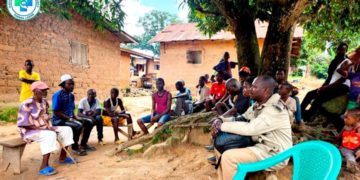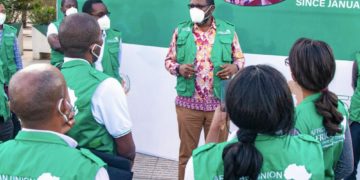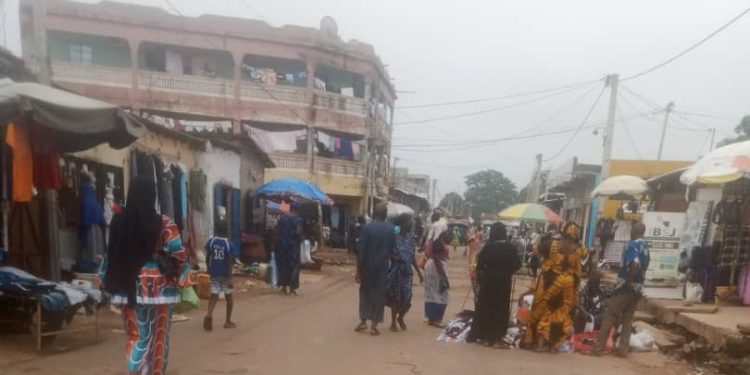By Kemo Cham in Serekunda, The Gambia
The Sierra Leonean community in The Gambia constitutes the third largest group of foreign nationals in the country, the latest census data shows.
The population of Sierra Leoneans in the country is 9,645, representing 0.4 percent of the country’s population, data from the 2024 Gambia Population and Housing Census reveals.
Senegalese constitute the largest group of foreign nationals in the country, with a population of 40,849, representing 1.7 percent of the national population, the figures published by The Gambia Bureau of Statistics, the equivalent of Statistics Sierra Leone, further reveals. This group is followed by Guineans at second place, with a population of 36,077, representing 1.5 percent of the total population.
All this is part of preliminary results of the Census released on Wednesday, September 11, 2024.
According to the report, the overall population of The Gambia stands at 2, 422, 712, representing an increase of over 300, 000 from the last census in 2013. Gambian nationals also constitute majority of the country’s population – 95.2 percent.
The census exercise was conducted from May 31st to June 14th, 2024.
It was the first ever census to be conducted in the country using computer assisted devices to collect data. The World Bank and the United Nations supported the process.
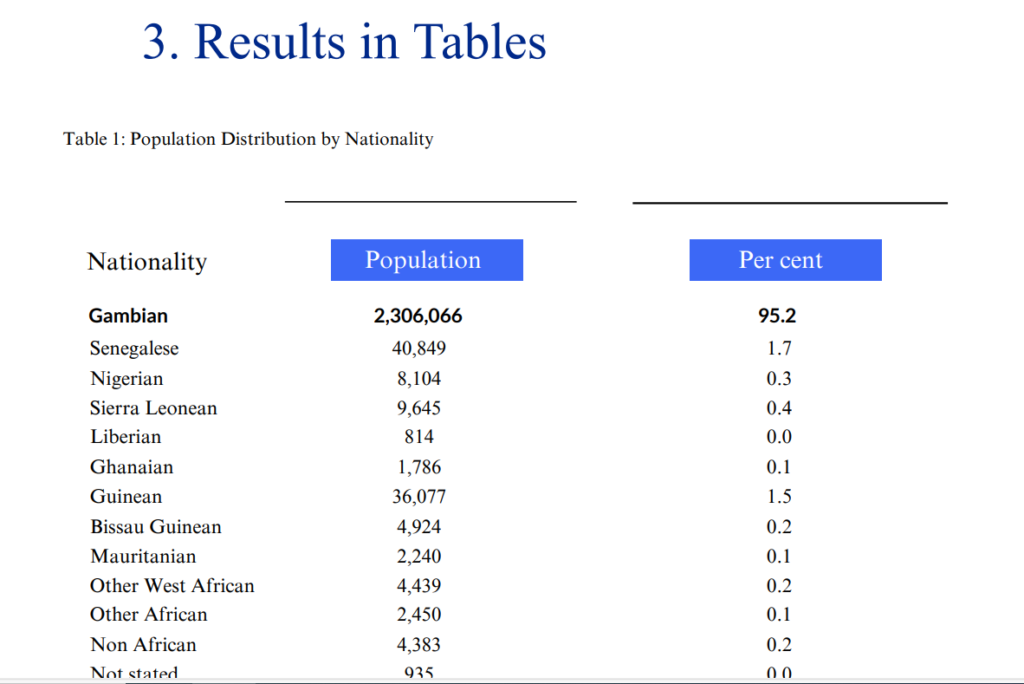
The country’s Vice President, Muhamadou Jallow presided over the launching of the report at a ceremony at the Sir Dawda Kairaba Jawara International Conference Center outside the capital, Banjul.
This is the eighth census to have been conducted in The Gambia since 1963.
Gambia is known as the Smiling Coast of Africa, thanks to its culture of hospitality, which makes it a haven for many foreigners. But lately migration has become a major political issue, especially after the last general elections in 2021 which was disputed by the opposition over alleged rigging involving foreign nationals.
This has led to skepticism about the outcome of this census.
Many Gambians, especially critics of the Government, have casted doubt on the veracity of the population of foreign nationals, particularly Senegalese.
Gambia, the smallest country on mainly Africa, is surrounded almost entirely by its only neighbour, Senegal, which has a population of over 18 million, according to figures from its National Agency for Statistics and Demography. Many of these critics believe that the population of the Senegalese in the country is larger than presented in the report.
Other non-Gambian nationals captured in the 2024 Population and Housing Census of The Gambia include Nigerians (8,104), Bissau Guineans (4,924), Mauritanians (2,240), Ghanaians (1,786) and Liberians (814).
Besides Senegalese and Bissau Guineans, every other group of non-nationals in The Gambian increased in number. The number of Senegalese in 2013 was 49, 026, while Bissau Guineans were 6, 122.
Between 1973 and 2003, the number of Sierra Leones increased substantially, with the largest increase seen between 1993 and 2003, from 1,605 to 7,649. The period 2013 to 2024 saw the second largest increase in the number, from 5,277 to 9,645.
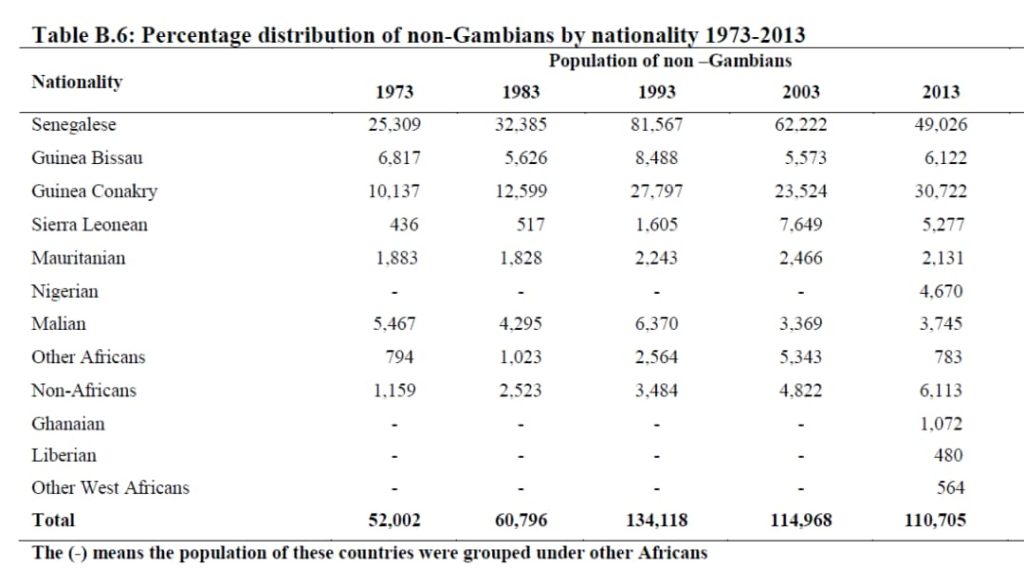
In terms of ethnicity, the Mandinkas (Mandingos) remain the largest group in the country, at 34.4 percent, followed by the Fullanis (Pular), which saw an increase to 25 percent, above the Wollofs at 15 percent. Jolas remain the fourth largest ethnic group in the country at 9.5 percent, followed by Sarahules (Marakas) at 8.2 percent, Serers at 2.9 percent, Manjagos at 1.7 percent, Bambaras at 1.2 percent, and the Akus or Krios at 0.4 percent. Other unidentified smaller ethnic groups constitute a combined 1.3 percent.
In terms of gender, females remain the highest of the population at 1, 244,000, representing 52 percent, against 49 percent males.

